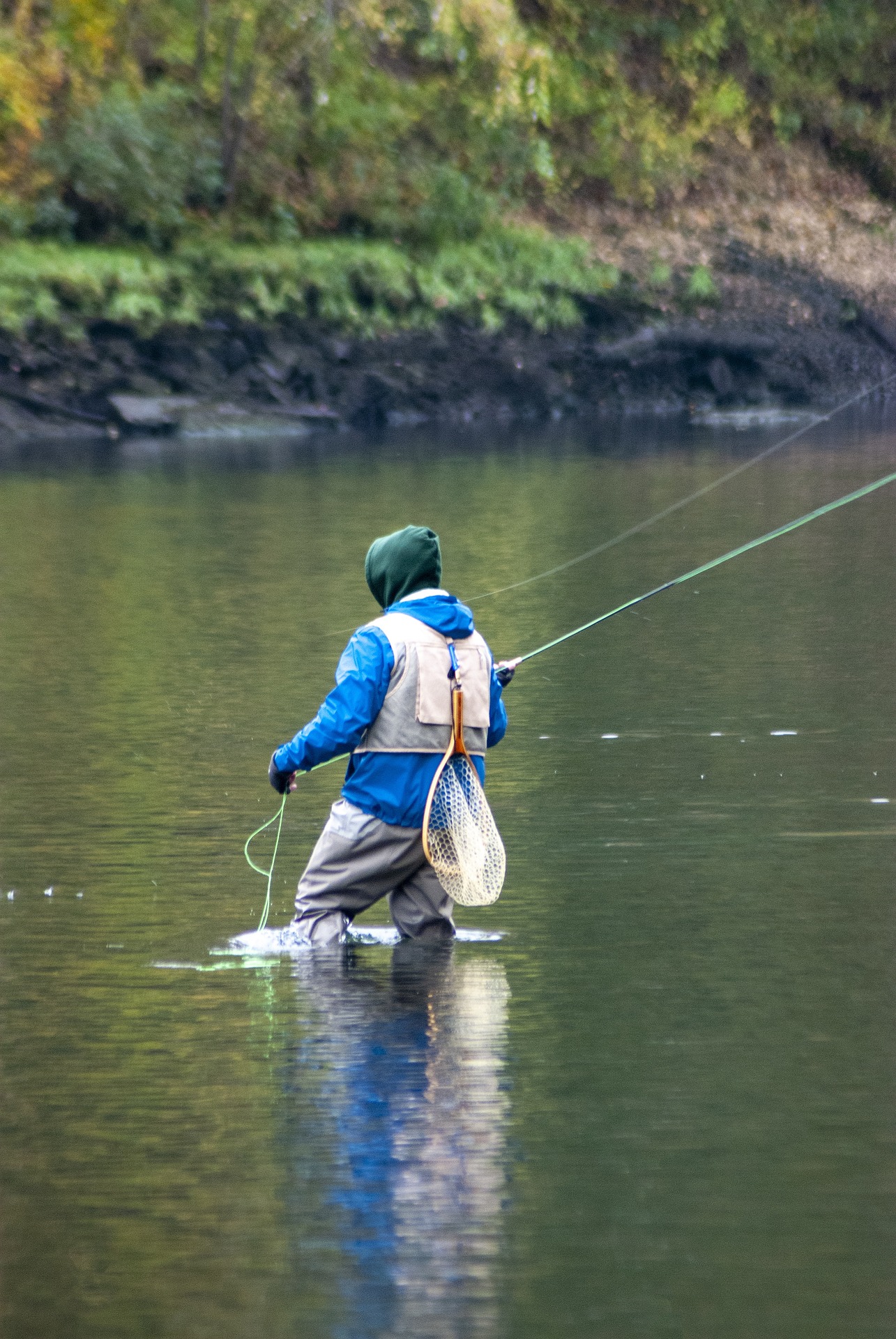Fly Fishing
North Carolina, with its diverse landscapes and waterways, is a haven for fly fishing enthusiasts. The state’s western region, particularly in the Appalachian Mountains, is famed for its trout-filled streams and rivers. The pristine waters of the Great Smoky Mountains and the Blue Ridge Parkway are home to native brook trout, as well as stocked rainbow and brown trout, offering a challenging and rewarding experience for anglers.
In the central part of the state, the Piedmont region’s rivers and lakes are ideal for targeting bass species. The Yadkin-Pee Dee River system, for instance, provides excellent opportunities for catching smallmouth and largemouth bass. These waters offer a unique fly fishing experience, as anglers navigate both calm waters and more challenging rapids.
The coastal regions of North Carolina present a different fly fishing adventure. The salt marshes and shallow coastal waters are perfect for pursuing species like redfish, spotted sea trout, and flounder. The Crystal Coast and the Outer Banks are particularly noteworthy, providing breathtaking backdrops for saltwater fly fishing.
North Carolina’s commitment to conservation and sustainable fishing practices ensures that these waters remain rich and bountiful. The state’s varied topography, combined with its rich aquatic ecosystems, makes it an ideal destination for fly fishing, offering both tranquility and excitement for anglers of all skill levels.
Fly Fishing is Exciting and Fun
Challenging
Serene
Skillful
Immersive
Natural
Basics of Fly Fishing
The art of fly fishing begins with the selection of equipment. A fly rod, distinctively flexible and longer than traditional fishing rods, allows for the nuanced casting techniques essential in this sport. The fly reel, while seemingly less critical, plays a vital role in managing the line and controlling fish during a catch. Fly lines, specially designed to match the rod’s weight, are thicker and heavier, aiding in the casting process. The leader, a clear, lightweight line, connects the fly line to the fly, ensuring a natural presentation.
Fly selection is a critical aspect of fly fishing. Flies are meticulously designed to represent various stages of insect life cycles or other natural prey. The choice of fly – dry flies that float on the water surface, nymphs that replicate immature stages of insects underwater, or streamers that mimic small fish – depends on the target species and current conditions.
The environment in which fly fishing is practiced is as diverse as the technique itself. Freshwater environments, such as rivers, streams, and lakes, are traditional fly fishing locations. Here, anglers primarily target trout, one of the most sought-after species in fly fishing. However, fly fishing is not limited to freshwater. Saltwater fly fishing has grown in popularity, targeting species like bonefish, tarpon, and redfish in coastal waters and flats.
The technique of casting in fly fishing is a skill honed over time, requiring rhythm, timing, and an understanding of environmental factors like wind and water currents. The most common casting technique, the overhead cast, involves lifting the line from the water and casting it forward in a smooth, controlled motion. Other techniques, like the roll cast or spey cast, are used in situations with limited space or specific environmental conditions.
Fly fishing is deeply rooted in a culture of conservation and environmental stewardship. The practice of catch and release is widespread among fly fishers, reflecting a respect for the natural environment and a commitment to preserving fish populations for future generations. This ethos extends to the broader fly fishing community, which often engages in habitat preservation and environmental advocacy.
Historically, fly fishing dates back hundreds of years, with references to the technique found in ancient literature. Modern fly fishing, however, developed significantly in the 19th and 20th centuries, with advancements in equipment and a growing understanding of aquatic entomology. The sport has evolved from a means of subsistence to a recreational activity celebrated for its artistry and connection to nature.
The social aspect of fly fishing is also noteworthy. It brings together a community of passionate anglers who share knowledge, techniques, and stories. Fly fishing clubs and organizations often organize outings, conservation efforts, and educational events, fostering a sense of camaraderie and shared purpose.
In summary, fly fishing is more than just a method of catching fish; it’s a harmonious blend of skill, art, and environmental awareness. It offers a meditative escape, a challenge to one’s patience and finesse, and a profound way to connect with the natural world. Whether pursued as a solitary endeavor or a communal activity, fly fishing remains a deeply rewarding experience that transcends the simple act of fishing, resonating with anglers around the globe.
Subscribe for Our Newsletter


